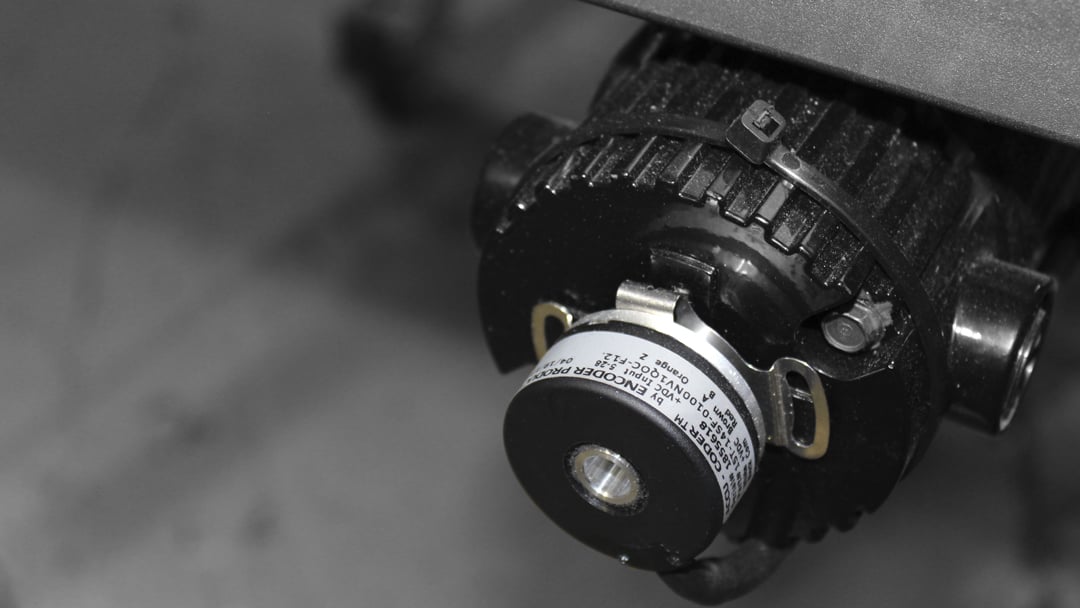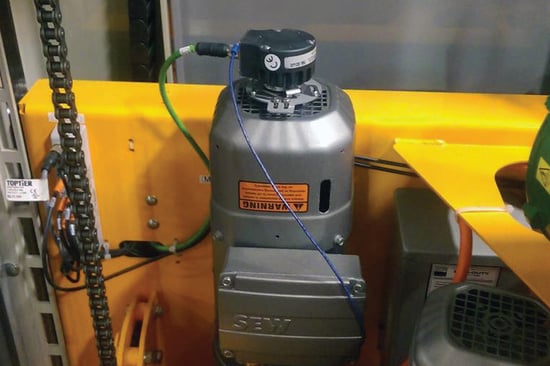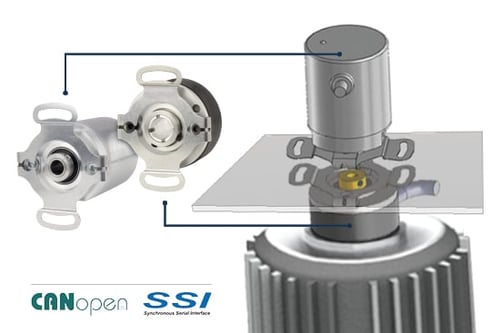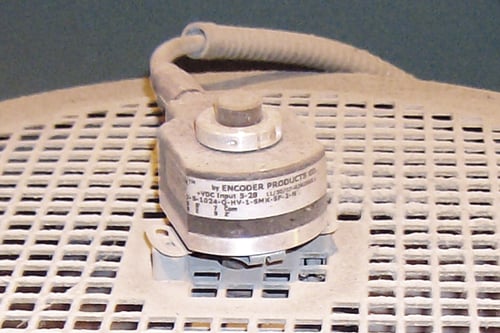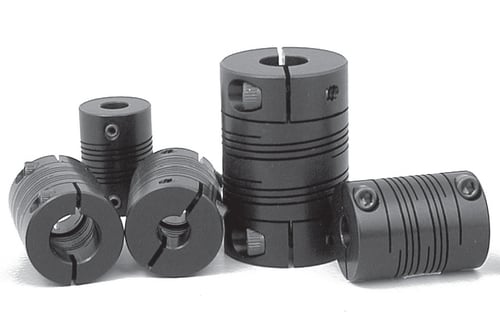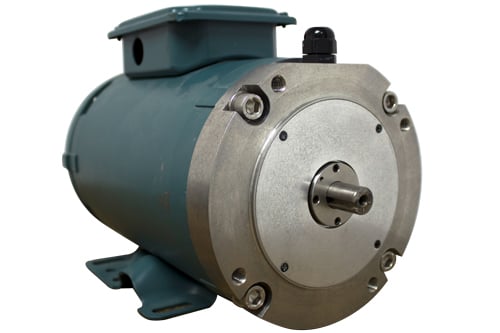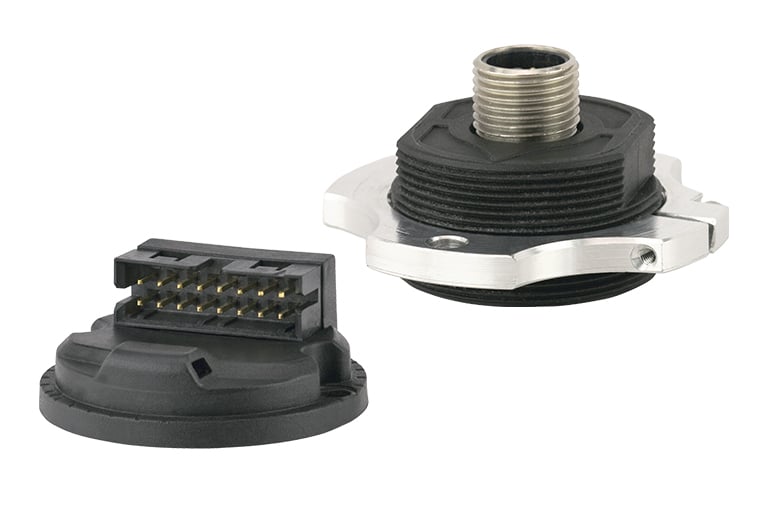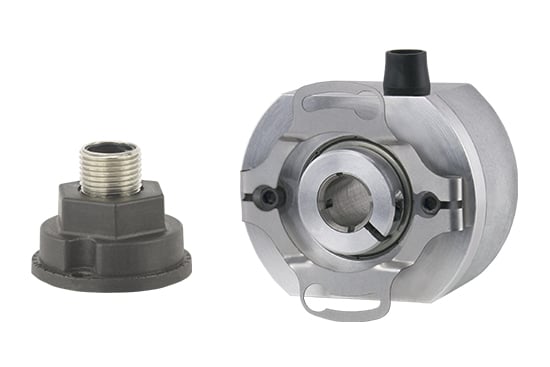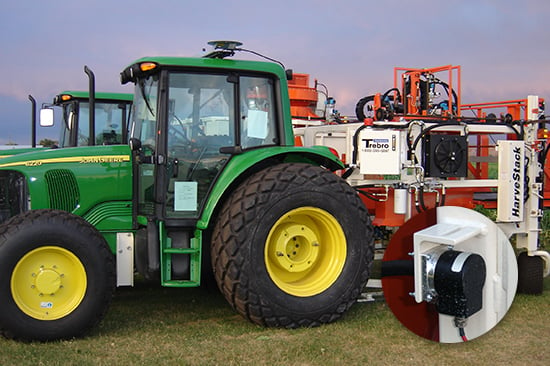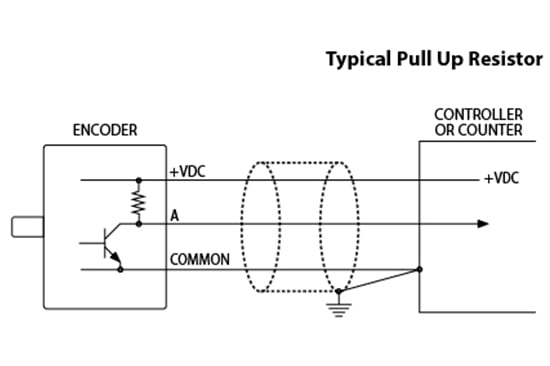1. Incremental or absolute?
Motor encoders, like all rotary encoders, indicate shaft movement in one of two ways: incremental or absolute. Choosing one of these options is typically the first step toward choosing the right motor encoder.
Incremental feedback
Incremental motor encoders are generally used to provide information about a motor shaft’s speed and direction by means of two clock channels, labeled A and B. The pulse rate indicates speed while the leading or lagging of channel A or B indicates direction. In the case of servo motors, an incremental encoder can also provide commutation channels, commonly known as U, V, W channels. The resolution of these U, V, W channels directly correlates to the number of magnetic poles on the motor. The commutation channels are used to properly align the windings and the magnets of the rotor and the stator and are how the control system knows when to energize certain windings to achieve optimal power and torque.
Absolute feedback
Absolute motor encoders indicate the shaft’s angular position as well as the direction and speed of its movement. In the case of servo motors, the use of an absolute encoder eliminates the need for the U, V, W channels. The same absolute data used for position, direction, and speed is also used for proper commutation alignment. The two basic types of absolute motor encoders are single-turn and multi-turn.
Single-turn encoders only allow for control systems to know the angular position of the motor shaft within a single revolution. The motor shaft can of course rotate more than a single revolution, but the number of complete shaft rotations is unknown when using a single-turn encoder.
Multi-turn encoders provide data that includes the number of complete shaft revolutions. This allows the control system to know how many complete revolutions the motor shaft has turned and the angular position of the shaft within its current revolution.
When speed control is an encoder’s only function, absolute feedback may be an unnecessary expense due to the higher cost of the encoder and requisite control system. In the case of speed control, incremental feedback meets the needs of the application and is the most cost-effective solution.
When the motor shaft’s actual position at any given time is important to the application, absolute encoders are crucial. For applications that require retained position information over multiple rotations due to functional requirements or after power loss, a multi-turn absolute encoder is needed.
